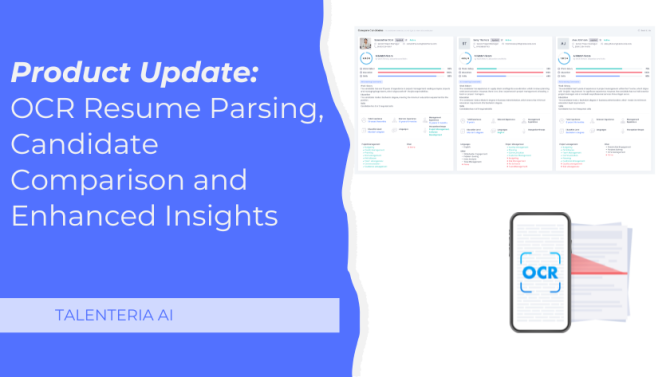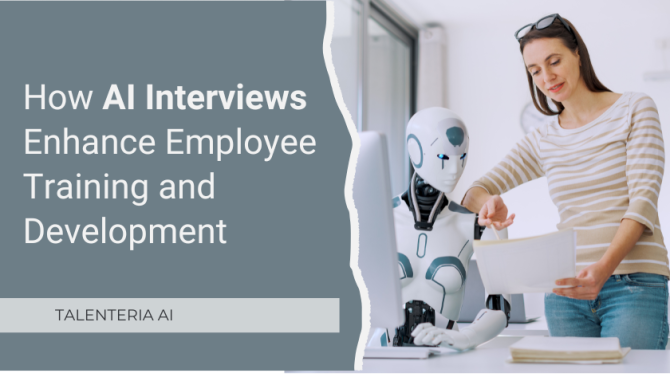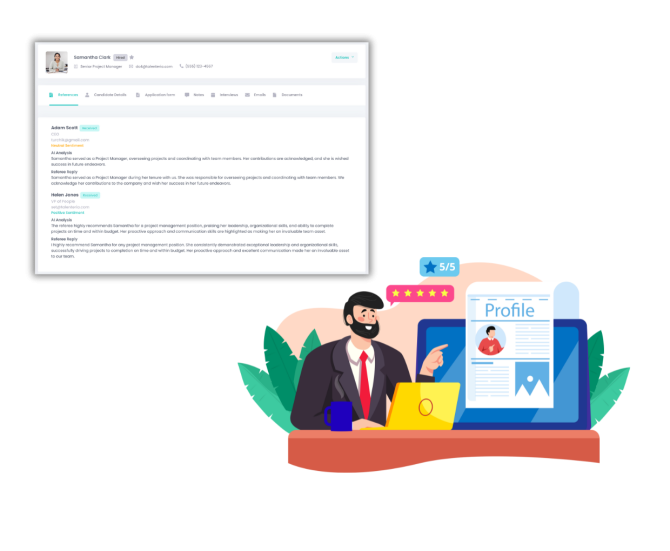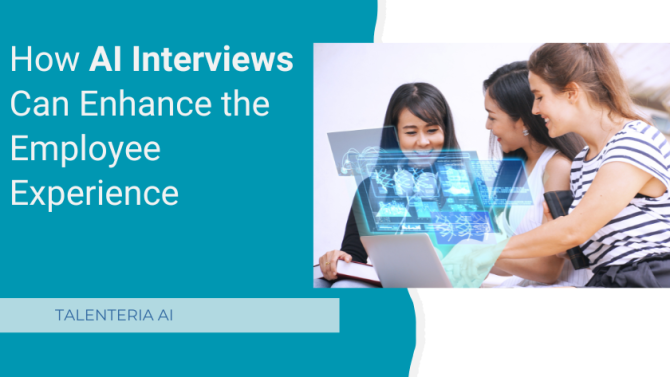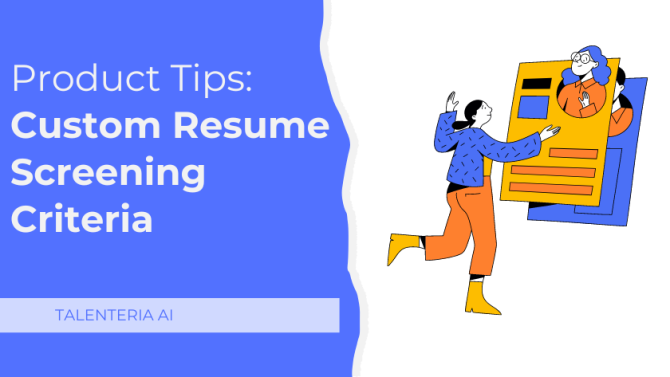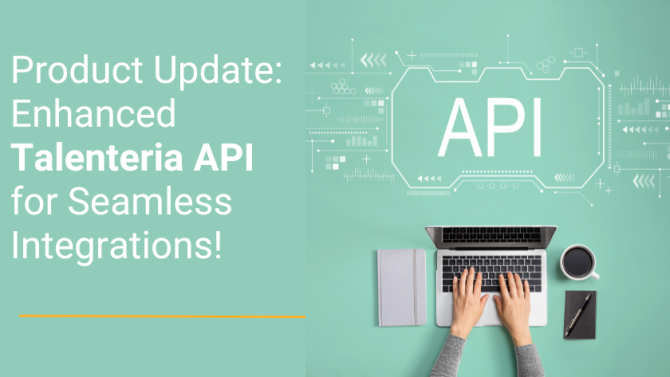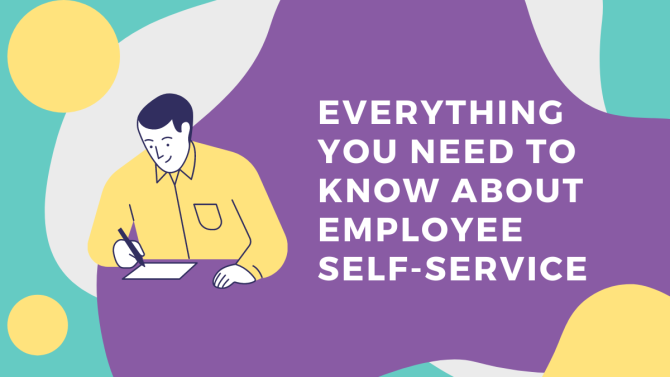
Even if you don't call it in this particular term, chances are your company utilizes some sort of employee self-service. Employee Self-Service, or ESS, is a method for staff to get immediate access to HR software and data. Let us take a dive into everything that needs to be known about ESS.
What Is Employee Self-Service (ESS)?
Employee self-service (ESS) is a type of platform that allows workers to manage their own human resources (HR), information technology (IT), and other organizational needs. ESS generally streamlines routine activities, such as:
- Updating personal details
- Reviewing company policies
- Documenting absence and annual leave
- Managing their insurance coverage
- Retrieving their payroll, timetables, and benefits information,
ESS is often made accessible through a private web interface portal. Previously, these kinds of regular HR duties were done on paper and manually by employees. With the advent of self-service, the recruitment field is rapidly evolving onto a more rational and efficient approach.
Self-service employee portals have emerged as a result of the digitization of corporate operations, saving organizations money and resources while minimizing human error and speeding the processing of employee requirements. As a result of the lower operating fees, companies are more likely to provide better employee benefits packages. Employee self-service is frequently part of broader technological projects and is supplied by third-party suppliers via SaaS platforms.
Generally, an organization will create a user portal that can be accessed over the internet using an employee login and password or using the company's selected software. This is frequently deployed as part of a bigger HR data system.
Why Use Employee Self-Service?
Employee self-service systems aim to strengthen a strong organizational culture and attract employees in an extremely competitive employee talent market by providing staff full control over their employment information.
Using technology to drive more benefits, engagement transformation, and thought leadership reflects on using employee engagement technologies on the benefits side to help employers attract and retain talent.
Employee self-service systems are increasingly being streamlined for cellphones and social media sites. They’re typically part of wider employee satisfaction plans that include health plans, awards and incentives, training management software, and company-wide social events.
Benefits of ESS
Employee self-service solutions help companies and workers conserve costs by reducing and simplifying routine HR processes. While no ESS portal can replace experienced human resources personnel, a well-designed and implemented system may relieve HR staffers of mundane chores, allowing them to focus on more complicated and pressing issues.
Likewise, employee self-service software may save time and effort by providing immediate access to information and functionalities from a desktop computer or mobile device. As a result, they can devote more time and attention to their own job, and therefore overall efficiency has improved.
These portals may be designed to pull data from a variety of sources, allowing workers to discover payroll information, policy information, development information, training information, and more all in one location. Employees may be more satisfied with their jobs if they believe they have more control over and convenient access to this sort of information without having to queue for assistance. Even if their application may require support in the future, they may submit the initial step at their leisure.
Aside from employee benefits, providing employees with direct access to print their own documents might save the company money. This is because only specific personnel who genuinely require the paper copy will print it, saving money on printing and delivery. This is also only one instance of how an ESS may assist a company towards becoming digital.
Because of the lower expenses involved with self-service, HR departments may be able to invest in extra benefits such as wellness and rewards programs. A new generation of third-party benefit providers is leveraging cloud-based HR platforms to provide unconventional perks, including shopping, entertainment, and personal services discounts. These companies use cloud services and associated technologies to make it simple — and affordable — for businesses to sign up for new benefits packages that can be readily incorporated into current ESS portals.
How Do You Create Self-Service Experiences for Customers and Employees?
1. Decide if ESS Is Right for You.
Employee self-service may help large firms in almost every sector. ESS may also assist small and medium businesses in specific industries. Firms must consider the advantages and downsides and undertake both internal and external research before investing in software to allow self-service choices.
2. Ensure Human Resource Self-Service Works
HR self-service may change a corporation's HR system, but it takes collaboration between human resources managers and managers of other departments to make employee use as frequent and ubiquitous as feasible. Employees should be taught how to utilize the system as part of their regular on-the-job training. Weeks before the end of the training, managers should ensure that workers are as confident with the HR self-service as they are with any other part of their jobs.
3. Early Implementation of Human Resource Self-Service
Several HR self-service software helps build up self-service portals for onboarding. Self-service will become ingrained in the minds of new workers if it is introduced at the initial stages, especially if they are required to utilize the software for more tasks soon after onboarding. Letting workers use this alternative to adapt to the firm encourages them to take responsibility for their own careers inside the workplace and aids in user adoption.
4. Employee Self-Service Portal Optimization
A knowledge base of vital information for employees is a key component of a successful ESS. However, it is only valuable if it has the answers that your workers are looking for. Monitor what subjects employees are searching for the most and create content around those themes to include the most relevant material. Search for self-service technology that enables you to tag or label related instances so that you can see when many employees are looking for the same information. You may also use Google Analytics to see what other subjects people are looking for. These items should be highlighted or otherwise prioritized on your ESS portal so that your staff has quick access to the most frequently requested information.
Your knowledge base is never truly done, just as your company is never truly done. Take full advantage of your ESS investment by supporting your workers to thrive and by constantly enhancing your content. Plan frequent, periodic evaluations of all of your material (including graphics and video), and assign expiry dates to all fresh and current material to compel you to examine everything you've created. Ask your employees to assess self-service material so that you can know what needs to be improved.
5. Simplify HR Self-Service
It's critical to fill your employee self-service portal with relevant and current information. However, you must make it simple for employees to quickly locate the information they require. Begin with the fundamentals: On your gateway, provide a search bar. Ensure that each subject and post has a clear title and is categorized appropriately so that employees can discover what they're looking for via search or browsing.
Your workers are your clients if you are working in human resource management. When people visit your self-service portal, you want them to feel at ease with the customer care experience being provided. It should feel like it is a product that truly belongs in your firm. Use a header and footer that match your business webpage or are part of a larger design aesthetic that runs through all of your corporation's domains. To maintain uniformity across all of your websites, including internal-only experiences, has to have a visual identity.
6. Create Mobile Self-Service Assistance
Cellphones are pervasive, and firms that offer connection at any point in time are attracting an increasing number of employees. Enhancing your employee self-service experience for smartphone access is a fantastic approach to promote a digital workplace, just as it's essential to deliver a standard multi-channel presence so your clients can fix their problems on the move.
According to research, 50% of mobile users would prefer to utilize a customer care app before contacting customer support to try to address their concerns. Your workers are the same way. They'd rather use an app than calling the internal support desk.
Even if you aren't ready to launch a specialized employee self-service app, you may create a responsive design ESS portal. This implies that your site's interface adjusts to the size of the device it's being viewed on, allowing your employees to obtain the support they need from their preferred device.
7. Continuously Promote Self-Service Usage
Encouraging staff to use HR self-service capabilities wherever feasible can support the efforts of your organization to get the most out of the operational expenditure.
8. Social Media Is Essential
Because social media is entertaining to use, your personnel may be lured to it if you provide it. Using business social feeds may help bring your team closer together and make it simpler to share company news quickly. It may also stimulate cooperation and innovation.
How Talenteria Can Help
Talenteria is a cutting-edge hiring marketing tool and job site creator that enhances your corporate image while also providing an exceptional applicant experience. Talenteria is a crucial progressive recruitment system that lets organizations hire effectively, saving time and money at every level of the hiring process. When you use Talenteria to create a career site, talented individuals will be able to add themselves to talent pools, apply for jobs, become shortlisted, and more. Pipe candidates through to Lanteria, an integration that offers self-service portal options.
